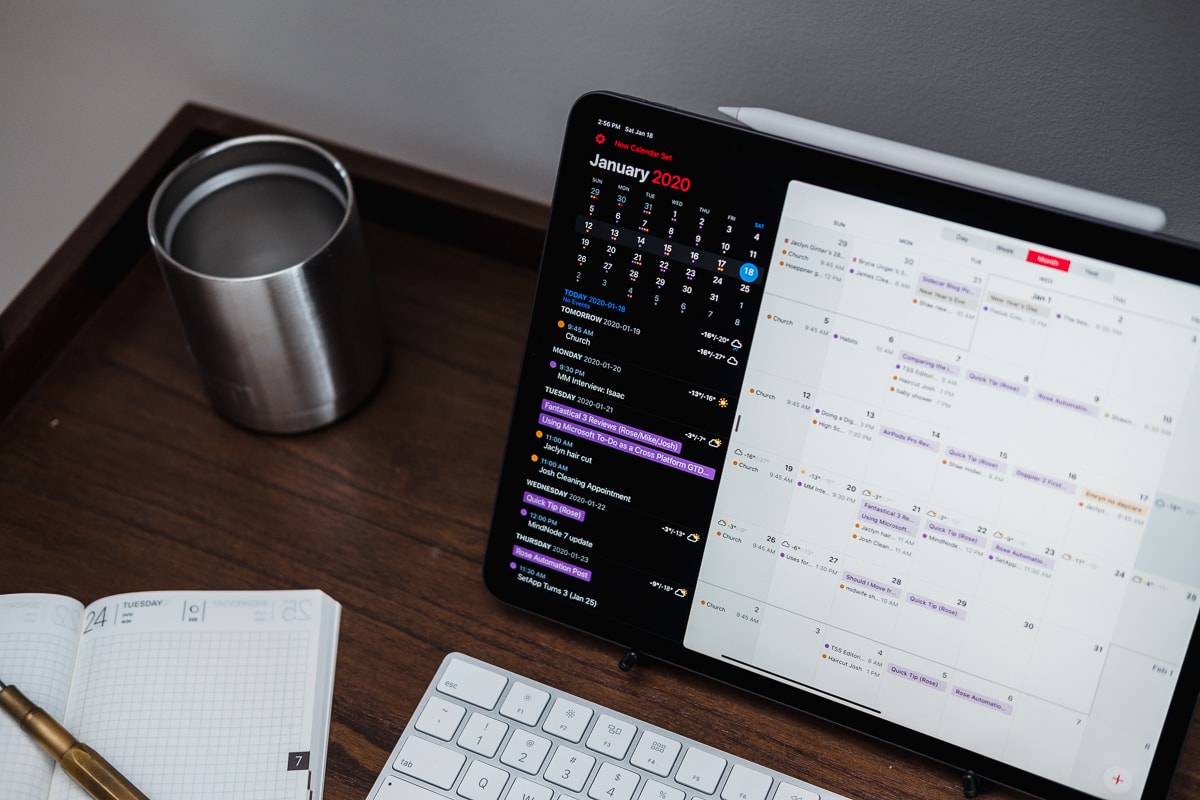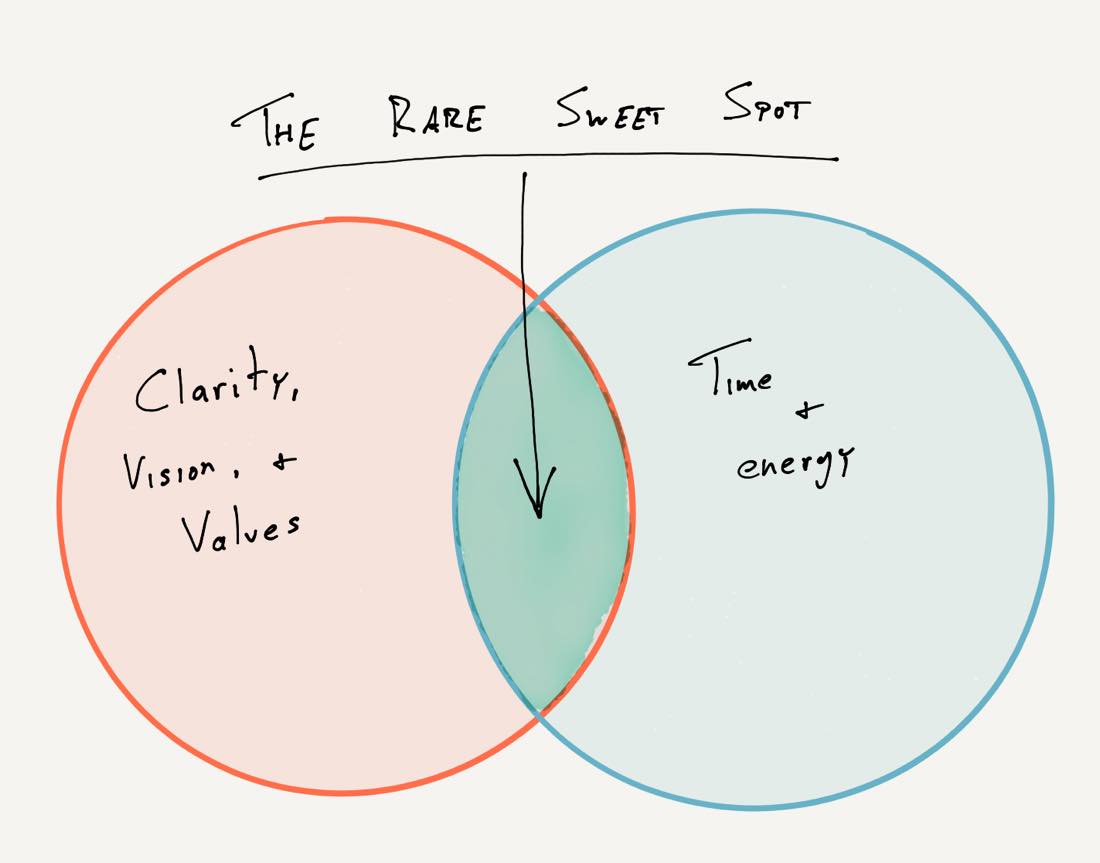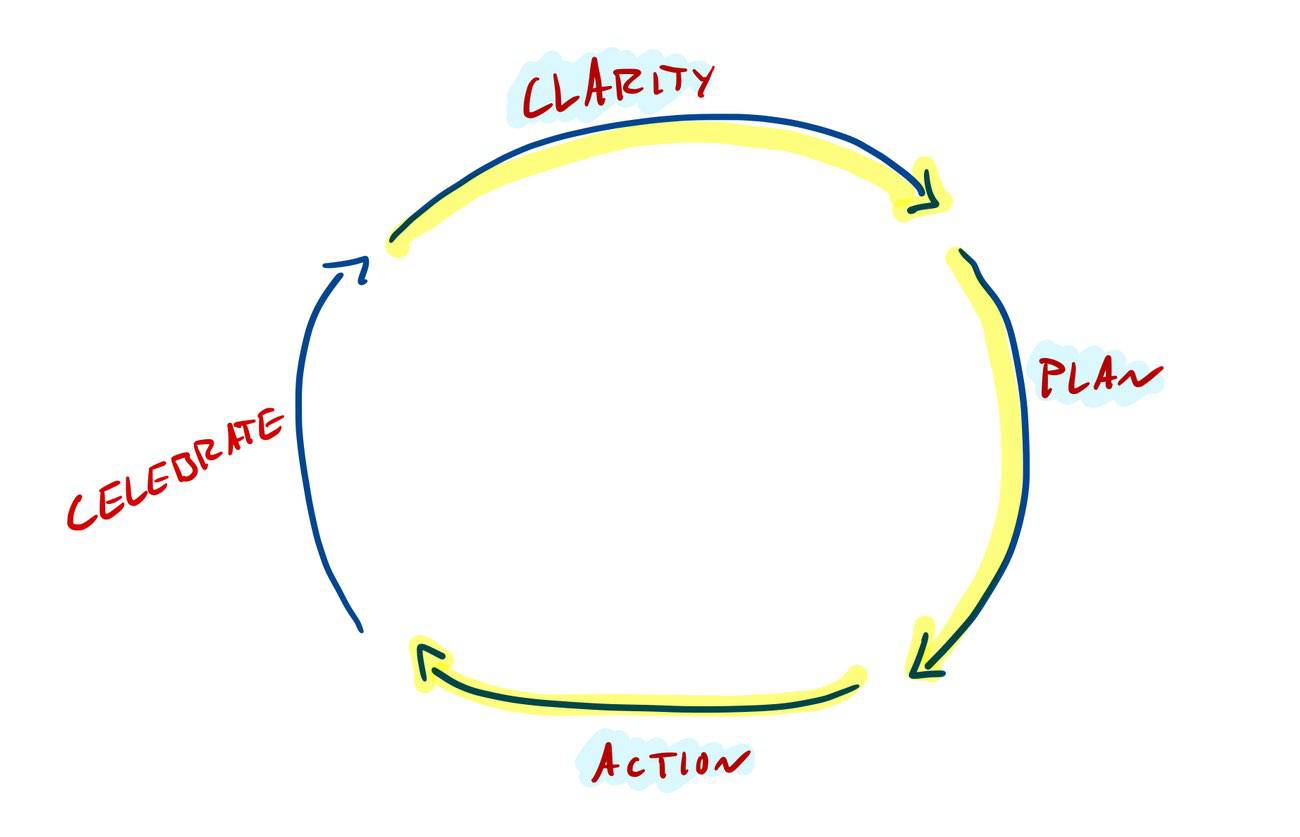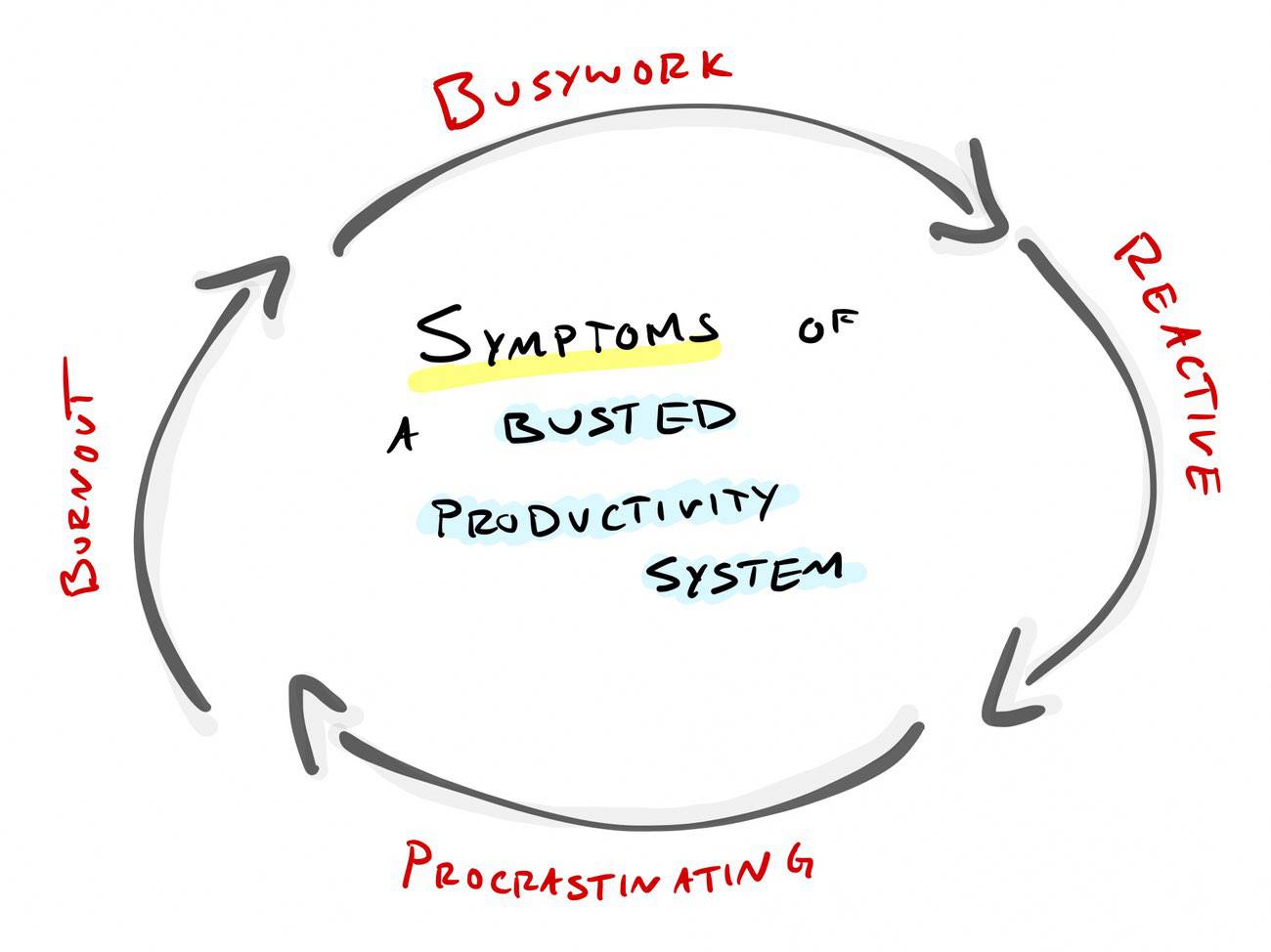How to Use a Calendar

In this article, I’m going to share two very important things for how to use your calendar:
- Why your task list should be on your calendar
- How to get it there by using time blocking
But first, who cares? Why should you, dear reader, care at all about putting your tasks onto your calendar?
For one, this matters because the sweet spot for productivity is when your time is in alignment with the things that truly matter to you. This is a rare place to be, but the more you can get these two to overlap the better.

Secondly, tasks take time. Anything you want to do will have to take place on your schedule. And by placing your tasks onto your calendar, you have far more control over them AND you are about three (3!) times more likely to actually get them done.
With that said, let’s dive in a bit…
The 4-Step Productivity Flywheel
If you want to consistently spend your time doing the things that are most important to you, then you’ll need this workflow:

- Get clear on what is most important
- Plan when you will do that thing
- Follow through on your commitment
- Celebrate your progress
(Later this week, I am teaching an entire workshop on this productivity flywheel, by the way.)
This flywheel works on the big-picture stuff of your career, your life, etc., but it also works on the smaller actions of your individual days.
Alas, it can be all to easy to skip one or more of the steps in the flywheel. And thus, when you skip one of the steps, you end up doing mostly busywork, putting things off, and feeling burnt out.

Is your productivity busted?
If you feel like you could use a tuneup for how you manage your tasks and your time, get access to our Productivity Workshop.
Shawn Blanc (founder of The Sweet Setup) covers:
1. The four most common symptoms of a busted productivity workflow
2. What you can do to overcome them
3. How to improve your approach to managing and organizing your tasks.
You’ll also get the downloadable templates and cheatsheets.
How I Plan my Week
When it comes to using your calendar to manage your tasks, it starts with the week view.
-
At the beginning of my week, I list out the most important things I want or need to get done this week. I try to keep that list of projects to three at most because that’s all I have the capacity to knock out each week. By limiting my weekly projects, I’m merely being reasonable and honest with myself.
-
Then, I look at my calendar to see what meetings, appointments, or events are already on the books.
-
With those two things in front of me, I plan out when I will be focusing on my projects for the week. At this point, I don’t get too granular — I keep it big picture and general. I usually do this by trying to give a “theme” to a day of the week, like “Project A” on Monday and “Project B” on Thursday … something like that.
The goal of my weekly planning time is to make some decisions about WHAT I will be working on and WHEN I will be working on it.
This is known as an Implementation Intention. A sentence like this is an implementation intention:
I will work on TASK on DAY at TIME in PLACE.
When you create a plan like the sentence above, then it increases the likelihood of your follow-through by roughly 3x! Because at this point, all the ambiguity is removed. All that’s left is for you to show up and follow through.
How I Plan My Day
My approach to daily planning is very similar to my weekly planning — it’s just that the former is more granular.
-
I start by listing the tasks I need to get done that day. Some are small, simple tasks, such as responding to a particular email. Some tasks are bigger — such as writing a first draft of an article, or mapping out the pre-launch campaign for our next big Focus Course Academy.
-
Secondly, I estimate out how much time each of those tasks will take.
-
Then, I put those tasks into my day’s calendar. (I don’t actually schedule them using Fantastical. I write my day’s schedule out onto something such as my notebook or into our Digital Planner.)
How Not to Manage your Tasks and Time
What I’ve noticed over the years is that most people manage their tasks and time by creating a long list of tasks and then they trying to peck away at those tasks throughout the day. That is a problem…
Without a plan for when you need your tasks done, and without an idea of the time needed for your tasks, you will find yourself procrastinating your to-do list while reacting to the things that pop up in your schedule.
Celebrate Your Progress
The fourth and final step of our Productivity Flywheel is to celebrate your progress.
This is one of the best parts! Yet, so many folks skip right over it.
Why would you skip over the chance to reward yourself and celebrate!?
When you celebrate your small wins and recognize the fact that you have just done something important — then not only does it give you a chance to recover from your hard work and effort, but it also helps you to reinforce the positive actions you want to take.
Celebrating your progress makes it all the easier to continue on with the flywheel and to follow through again, and then again, and again … doing the things that matter most.
Summary
Clarity cures busywork. You’ll be amazed at how much time you save when you know WHAT to do and WHEN to do it. It removes so much of the guess work and the in-moment distractions from your day.
Your tasks take time, so give them time by planning out your to-do list onto your schedule.
As you get things done, recognize your progress and take the time to celebrate your effort. This will keep the momentum going for you.
Is your productivity busted?
If you feel like you could use a tuneup for how you manage your tasks and your time, get access to our Productivity Workshop.
Shawn Blanc (founder of The Sweet Setup) covers:
1. The four most common symptoms of a busted productivity workflow
2. What you can do to overcome them
3. How to improve your approach to managing and organizing your tasks.
You’ll also get the downloadable templates and cheatsheets.
